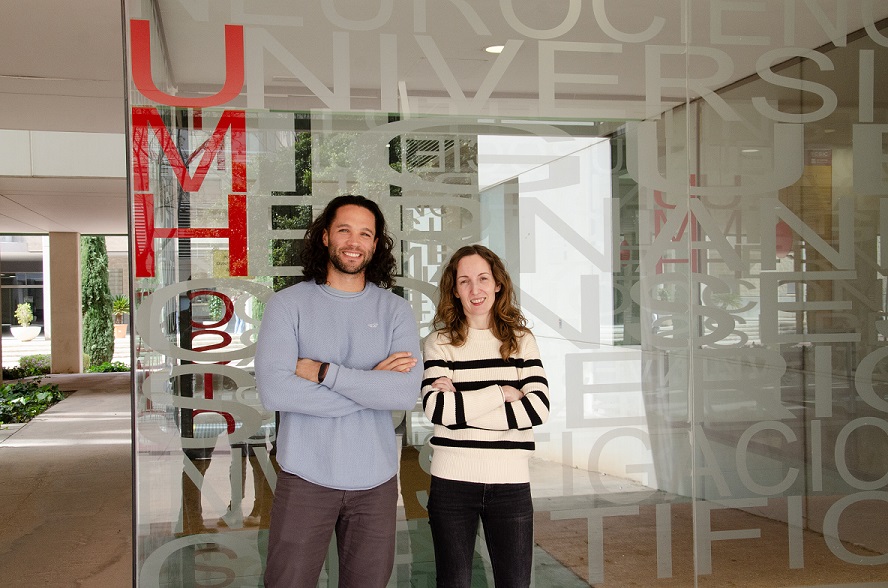Two researchers from the Institute for Neurosciences are among the winners of the Santander-UMH Awards for Young Researchers 2023
28 de February de 2024
The Santander-UMH awards are aimed to recognize the research work in scientific publications carried out by young researchers from the Miguel Hernández University (UMH) of Elche on different branches of knowledge. The researchers from the Institute for Neurosciences (IN), a joint center of the UMH and the Spanish National Research Council (CSIC), Francisco Javier Rodríguez Baena and Verónica Murcia Belmonte have received this award in the 2023 edition.

Photo: IN-CSIC-UMH researchers Javier Rodríguez Baena and Verónica Murcia Belmonte.
The first prize in the Health Sciences branch, in the open access modality, has been awarded to Francisco Javier Rodríguez Baena for the article 'Metabolic rewiring induced by ranolazine improves melanoma responses to targeted therapy and immunotherapy', of which he is the first author. This is a study co-led by the laboratory of the researcher Berta Sánchez-Laorden at the IN, together with researchers from the biomedical research centers Navarrabiomed and IRB Barcelona. The results of this work, published in the journal Nature Metabolism, determine that ranolazine, a drug currently administered to patients to treat heart conditions, delays the appearance of resistance to melanoma treatments, by blocking fatty acids metabolism.
This research demonstrates, for the first time functionally in mice, that fatty acid metabolism plays an important role in developing resistance to melanoma treatment. The drug increases the effectiveness of therapy directed against this type of cancer because it has the ability to act on this oxidation of fatty acids. Furthermore, its application allows melanoma cells to be more visible to the immune system, improving the response to immunotherapies and increasing the capacity of lymphocytes to control tumor growth.
For her part, Verónica Murcia Belmonte has been awarded second prize in the Science branch, in the open access modality, for the article 'A Retino-retinal Projection Guided by Unc5c Emerged in Species with Retinal Waves', of which she is the first author. This study, published in the journal Current Biology, is led by the laboratory of the researcher Eloísa Herrera at the IN and demonstrates that, during the development of the brain's visual areas, the two retinas temporarily communicate with each other through nervous projections.
This connection between both retinas is important so that the representation in the visual cortex of the images from the two eyes is formed in a synchronized and perfectly aligned manner, which ensures that they can be merged in a consistent manner. Furthermore, this work describes the molecular mechanisms by which temporal projections are formed between the retinas, which eventually disappear once the visual circuits have developed, because they are no longer necessary for the processing of visual information in adult animals. The researchers also observed that there is a correlation between the number of fibers that connect the retinas during the development of visual areas and the degree of complexity of the visual system in different species.
Source: Institute for Neurosciences UMH-CSIC (in.comunicacion@umh.es)

 Español
Español